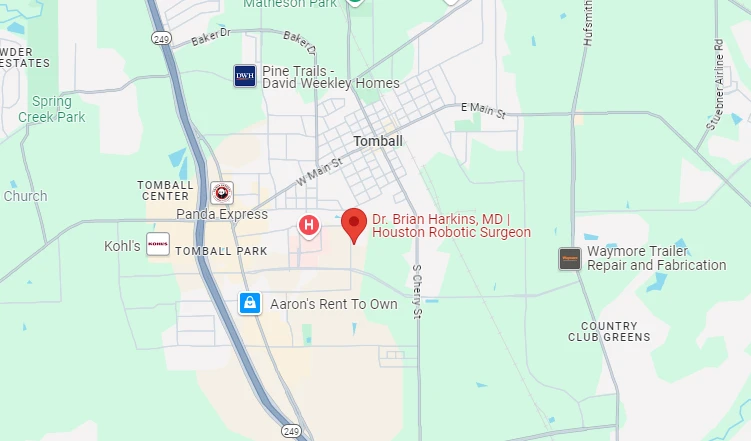
Gallbladder pain can bring daily life to a halt. The gallbladder is a small, pear-shaped organ tucked under the liver on the right side of the abdomen, and when it misfires you may need the organ removed. If you’re searching for a specialist near Houston, you’ll be relieved to know that board-certified general surgeons perform the majority of gallbladder surgery—technically called a laparoscopic cholecystectomy—through four small incisions in your abdomen.
These minimally invasive procedures are done daily across the metroplex, from Houston Methodist Hospital in the Texas Medical Center to facilities affiliated with HCA Houston Healthcare in Sugar Land, Katy, and The Woodlands. Skilled surgeons use a camera-guided laparoscope to separate the gallbladder, remove gallstones, and prevent bile from leaking into the small intestine. The result is less pain, quicker recovery time, and smaller scars compared with traditional open surgery. Below you’ll discover which surgeons qualify, how to pick the best doctor, and what to expect on the day of surgery and beyond.
Gallbladder disease usually starts with severe abdominal pain in the right upper quadrant, especially after fatty foods high in cholesterol and bile salts. Symptoms with medication or dietary tweaks can be managed temporarily, but persistent problems with the gallbladder often mean the organ will need to be removed to avoid complications such as pancreatitis or block the bile duct entirely.
When ultrasound imaging confirms gallstones or inflammation, a doctor may recommend surgery to remove the gallbladder rather than “flush” the stones, because gallstones almost always recur.
| Surgeon Type | Training & Certification | Ideal For | Houston Examples |
|---|---|---|---|
| General Surgeon | 5-year residency, American Board of Surgery certified | Routine laparoscopic surgery | Houston Methodist, Memorial Hermann, center in Houston |
| Hepatobiliary Surgeon | Extra fellowship in liver/bile-duct surgery | Complex stones, bile-duct repair, gallbladder cancer | MD Anderson, Baylor St. Luke’s |
| Minimally Invasive / Bariatric Surgeon | Advanced laparoscopy & robotic surgery training | High-BMI patients, prior abdominal surgery | UTHealth, HCA Houston Northwest |
| Trauma / Acute-Care Surgeon | Level I trauma focus | Emergent cholecystectomy with infection | Ben Taub Hospital |
A board-certified general surgeon in Houston may perform 100 or more laparoscopic procedures annually, making them the logical first stop for diagnosis and treatment of gallstone disease.
If your gastroenterologist sees gallstones lodged in the common bile duct or suspects gallbladder cancer, you may be referred to a hepatobiliary surgeon familiar with robotic surgery and traditional open techniques.
For patients with obesity or a previous abdominal surgery, a surgeon skilled in minimally invasive laparoscopic or robotic techniques can reduce operative time, limit one of the incisions to the belly button, and shorten hospital stay.
High-volume surgeons—those logging at least 30 laparoscopic gallbladder removal surgeries each year—show lower complication rates. Don’t hesitate to make an appointment and ask how many procedures the surgeon makes every month.
Confirm that your surgeon is board-certified in general surgery and privileges at a hospital with full ICU backup. Ask how often the surgeon may convert to open surgery if inflammation of the gallbladder is severe.
Hospitals in the Texas Medical Center provide 24/7 interventional radiology, but community sites in Sugar Land and Katy often offer equal safety with easier parking. Look for a center that offers both traditional open and robotic options in case anatomy is complex.
Call your insurer with CPT 47562 (laparoscopic cholecystectomy) to verify coverage. Obtain a global fee quote covering surgeon, anesthesia, facility, and any robotic equipment.
Search “gallbladder removal doctors in Houston” to read first-hand feedback. Choose a doctor whose communication style makes you feel heard and confident.
Most laparoscopic procedures involve four small incisions; patients walk the hallway within hours and go home the same day. Traditional open surgery or robotic conversion may require several nights in the hospital but still features manageable recovery time compared with older techniques.
The liver continues to produce bile, but it drips continuously into the small intestine. Opt for smaller meals, lean proteins, and avoid greasy foods for the first month to aid digestion.
Attend your two-week checkup; call sooner if you notice fever, yellow eyes, or unrelenting abdominal pain—these could signal a bile-duct leak.
Gallbladder surgery can be performed safely and efficiently in dozens of Houston hospitals. Whether you choose a downtown academic facility or a suburban surgical center, selecting a high-volume, board-certified general surgeon is key. Book an appointment online today, verify insurance coverage, and you’ll likely return to normal life within a week—free from gallstone attacks.
Laparoscopic surgery requires four small incisions, a tiny camera, and long instruments to remove the gallbladder. Traditional open surgery uses a single larger incision beneath the right ribs. The minimally invasive approach results in less pain, fewer wound complications, and a faster return to normal activities for most Houston patients.
A doctor may recommend dietary changes, cholesterol-lowering medication, or endoscopic procedures to treat gallbladder symptoms temporarily. However, if gallstones continue to block the bile duct or severe inflammation recurs, surgery to remove the gallbladder is usually the definitive solution to prevent future attacks.
Robotic surgery uses wristed instruments controlled from a console, offering enhanced precision in tight spaces. Outcomes for uncomplicated cases mirror standard laparoscopy, but robotic platforms can benefit obese patients or complex anatomy. Ask your surgeon in Houston whether a robotic approach offers meaningful advantages for your situation.
Age alone is rarely a contraindication. Board-certified surgeons evaluate heart, lung, and kidney function first. Studies show seniors experience less postoperative pneumonia and shorter hospital stays with minimally invasive cholecystectomy compared to open surgery, provided medical comorbidities are well controlled.
Most patients tolerate normal diets after a brief low-fat period. A minority report loose stools when high-fat meals are eaten rapidly because bile flows continuously into the small intestine. Gradual reintroduction of fats and fiber usually resolves these symptoms within a few weeks.
Light cardio is encouraged after two weeks, but heavy weightlifting that strains abdominal muscles should wait four to six weeks. Your Houston surgeon may perform ultrasound at follow-up to ensure incisions and internal sites have healed properly before clearing intense workouts.
The surgeon may perform an intra-operative cholangiogram and, if stones are present, remove them through the cystic duct or schedule an immediate endoscopic procedure (ERCP). Dealing with stones immediately reduces the risk of jaundice or pancreatitis after surgery.
Chronic inflammation of the gallbladder from gallstones increases the lifetime risk of gallbladder cancer, although the overall incidence is low. Removing the diseased organ eliminates this particular cancer risk and prevents future inflammatory episodes.
Most surgeons allow domestic flights within one week of laparoscopic gallbladder removal, provided you can walk the aisle periodically to prevent blood clots. International flights may be delayed two to three weeks. Always confirm individual timelines with your surgeon in Houston.
Use provider directories, check hospital websites, or call a center directly to book an appointment online. Verify that the surgeon is board-certified, high-volume, and experienced in minimally invasive procedures. Bringing prior imaging and lab work to your consultation streamlines pre-operative planning.


Dr. Brian Harkins is a renowned surgeon specializing in advanced, minimally invasive, and robotic surgical techniques. With a dedication to innovation and personalized patient care, he has transformed countless lives by delivering exceptional outcomes.

I want a website like this, where do i start?